Self drive Safari Serengeti
Self drive Safari Serengeti, Many people aspire to travel to the African continent for a self-drive adventure but ultimately abandon their aspirations owing to apprehension and uncertainty over the safest and most appropriate country for a memorable trip. Among the 56 countries on the continent, the United Republic of Tanzania should be considered a prime option for your safari planning.
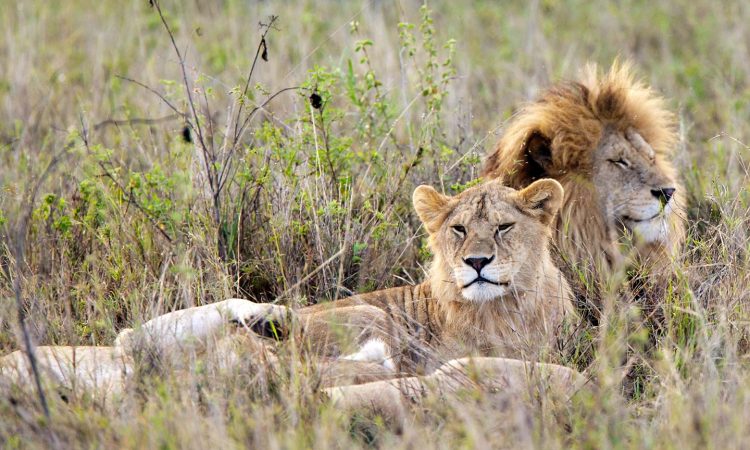
Located in the Eastern subregion of Africa within the African Great Lakes region, the Republic of Tanzania is one of the premier destinations for an African self-drive expedition. Covering around 947,303 square kilometers, the country ranks as the 30th largest in the world by area.
Tanzania is bordered by Uganda to the north, Kenya to the northeast, the Comoro Islands and the Indian Ocean to the east, Mozambique and Malawi to the south, Zambia to the southwest, and Rwanda, Burundi, and the Democratic Republic of Congo to the west. It offers a multitude of attractions across diverse destinations that can be conveniently explored during a self-drive excursion.
These attractions encompass cultural and historical monuments, game reserves, national parks, cities, lakes, rivers, and Africa’s freestanding mountain, Kilimanjaro, among others. Organizing a self-drive expedition to the Republic of Tanzania is entirely feasible; the following are essential considerations that will be pivotal to your enjoyment and adventure.
Self-Driving in Serengeti National Park
Serengeti National Park is one of Tanzania’s premier attractions, featuring savanna grasslands, acacia trees, and small forests and woodlands. The park offers an exceptional experience of wildlife species as it accommodates the big migration.
The migration entails a herd of over 1 million wildebeests and hundreds of zebras as they advance towards the Mara River to cross into Kenya. During the migration to Kenya, the animals encounter numerous challenges, including predatory crocodiles and lions, resulting in the loss of many lives.
Additional wildlife to observe throughout the safari comprises elephants, cheetahs, buffalo, hyenas, impalas, wild dogs, elands, gazelles, lions, ostriches, and several others. Wildlife can be observed during various park activities, including game drives, nature walks, and hot air balloon excursions.
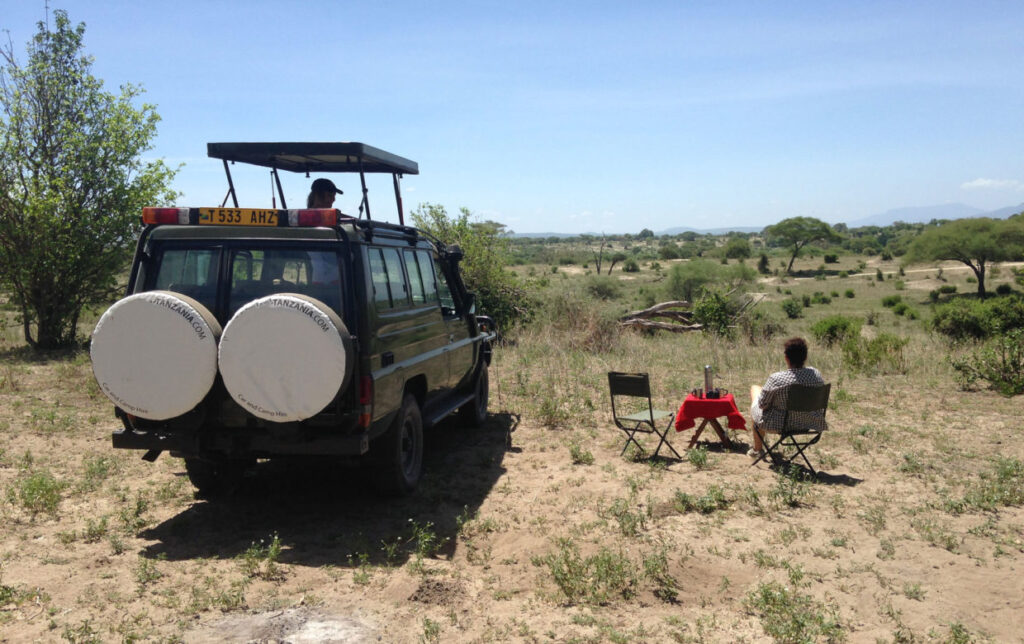
Should I reserve a Guided or Self-Drive Tour?
To address this inquiry, consider the following questions: Should I go with a guide or independently? Making an informed selection is essential. However, please note that selecting a self-drive journey does not imply total independence.
Our office in Arusha is always accessible to assist you, and many of the activities we propose, even for self-drive trips, are guided to provide an optimal experience.
The primary distinction between a guided trip and a self-drive trip is that a guided trip features a personal guide throughout the journey, whereas a self-drive trip does not offer this service.
Serengeti 4×4 Car Rentals
Self-Drive 4×4 Tanzania – 4WD Vehicle Rental with Rooftop Tents
The best way to enjoy Tanzania is through a self-drive safari. We provide 4WD vehicle rentals and camping equipment rentals at the most cheap prices.
Seeking for car rental options in Tanzania for long-term or self-drive excursions in Tanzanian National Parks? We offer distinctive customized Safari Land Cruisers equipped with camping gear and rooftop tents for your bush camping experience in Tanzania.
Our 4×4 rental vehicles in Tanzania are robust enough to navigate the challenging roads of the Serengeti and Ngorongoro Craters, which are included in our customized safaris around Lake Victoria.
Land Cruiser TZ/TX
We endorse this jeep for self-driving in Tanzanian National Parks, except visits to the Serengeti and Ngorongoro Crater. Our Toyota Land Cruiser TX & TX models, manufactured between 1996 and 2018, feature operational air conditioning, a radio, and a 3400 CC engine. They are equipped with a pop-up roof for wildlife observation and are recommended for self-drive excursions to Selous National Park, Ruaha National Park, Serengeti, and all other national parks in Tanzania
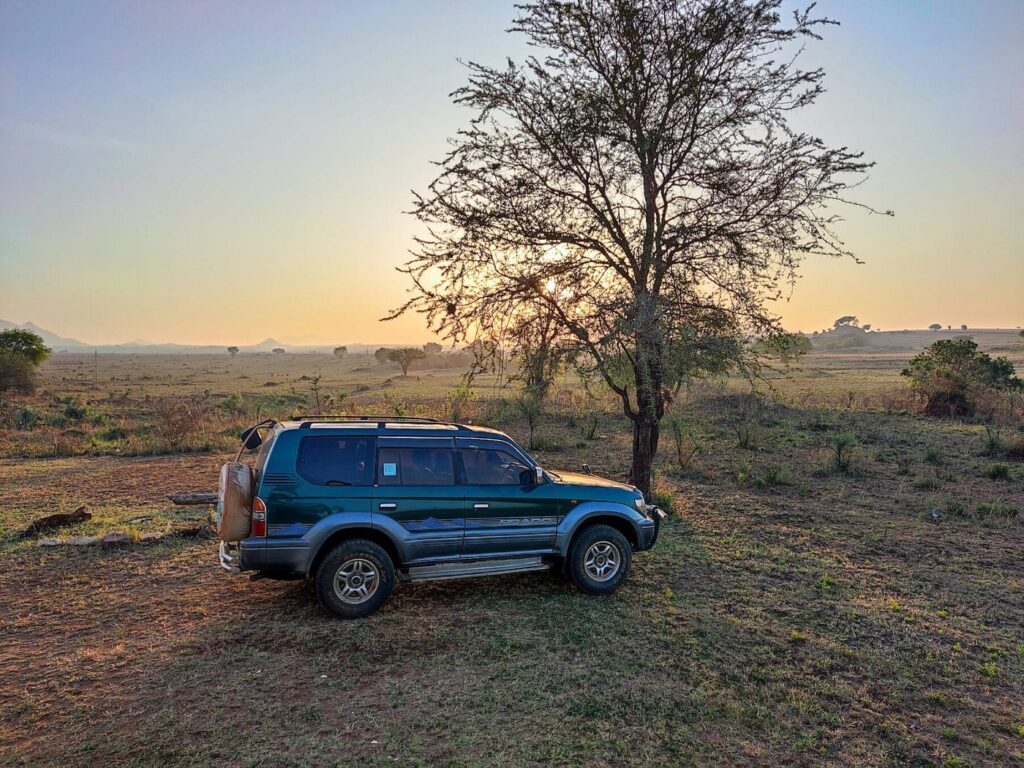
| Ground tent Camping |
$ 5 pp/day |
| Land cruiser V8 & with roof top tent | $180 /day |
| Land Cruiser V8 with pope up roof |
$150 / day |
| Electrical fridge | $10 / da |
Toyota Land Cruiser Hardtop
The most luxurious, new-model Safari Landcruiser is recommended for visitors to Serengeti National Park. Reserve your Safari Vehicle for self-drive. Embark on a journey across Tanzania with us, utilizing a Land Cruiser 4×4 jeep equipped with double sleeping bags, functional air conditioning, and a 4660 CC 1HZ engine.
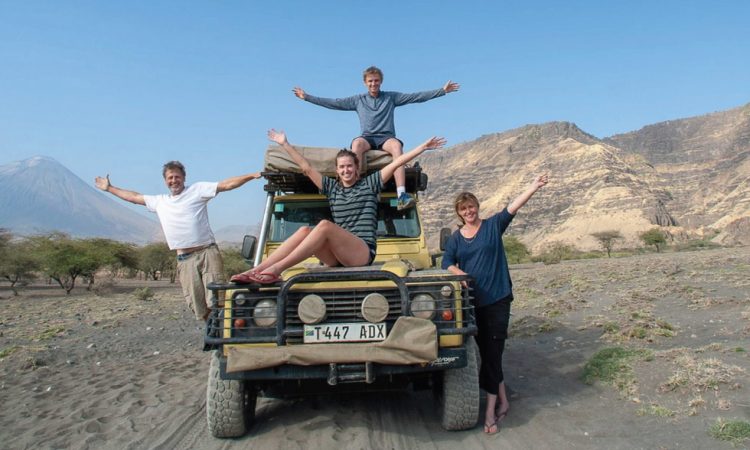
| Ground tent Camping |
$ 5 pp/day |
| Land cruiser LX & with roof top tent | $180 /day |
| Land Cruiser LX Normal |
$160/ day |
Self-Drive Serengeti FAQ’s
Is it possible to explore the Serengeti on a self-guided safari?
Indeed, you are able to do so! The Serengeti is arguably the most rewarding wildlife reserve globally. Nonetheless, it is a park that is most appreciated when one has adequately prepared beforehand.
Self-drive safaris in the Serengeti are permitted with Serengeti Trips Tanzania vehicles, exclusively with a Land Cruiser. The primary route extending from Naabi Hill gate to Seronera, the epicenter of activity, and from Seronera branching out to the East and West, is infamous among tour guides in Tanzania for its challenging driving conditions. The path is arduous, characterized by a rugged terrain and undulating ridges. Maintain a speed limit of 25 km/h, otherwise you will rapidly lose control. A single vehicle rollover resulting from this incident is not covered by the insurance.
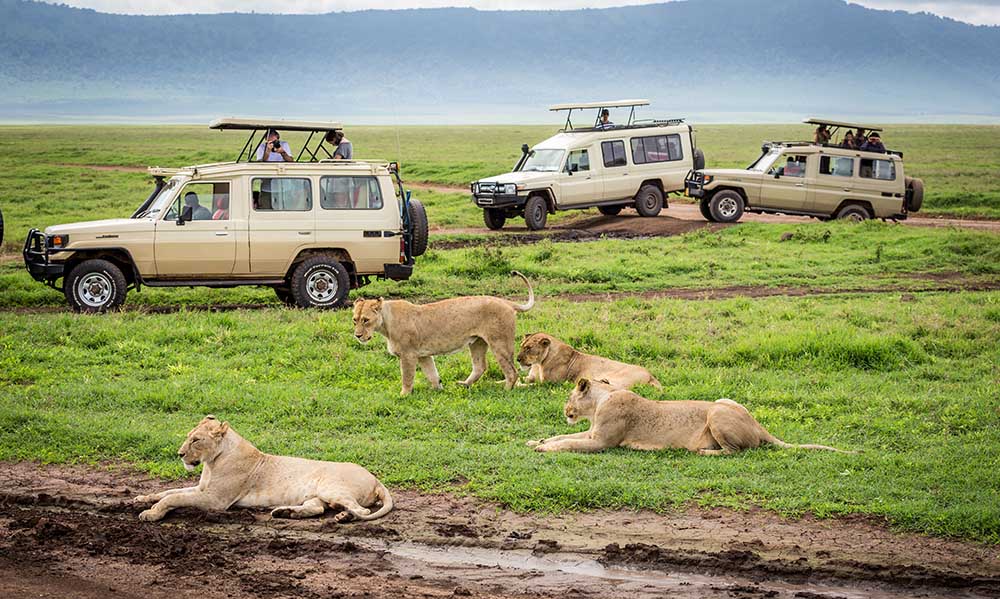
Serengeti National Park constitutes a component of a transboundary ecosystem. Comprising the Ngorongoro Conservation Area (NCA), the Maasai Mara in Kenya, and other smaller game parks. The southern plains of the Serengeti, including Ndutu and Seronera, are the most accessible areas from Arusha. The western corridor and Lobo offer valuable exploration opportunities, albeit at a considerable distance. For an exploration of the less frequented regions of the Serengeti, it is strongly advisable to rent a vehicle with a driver-guide through Serengeti Trips Tanzania.
The driving durations to the Serengeti are as follows:
Travel time from Loduare Gate (entry to the Ngorongoro Conservation Area) to the Ngorongoro Crater entrance: 1.5 hours
Duration from Ngorongoro Crater entrance to Naabi Hill Gate (Serengeti entrance): 2.5 hours
Naabi Hill Gate to Seronera (public campsites): 1 hour
Travel time from Seronera to Lobo (public campgrounds in the North): 2 hours
Arusha to Seronera: 9 to 10 hours
Optimal maps of the NCA and Serengeti:
Harms Verlag (IC) Ngorongoro Conservation Area
Updated Map of Serengeti National Park (shown below). Individuals sell them on the street in Arusha, at the clock tower located in the town’s center.
What is the entrance charge for the Serengeti?
Consult the Tanzania Practical Information section for a current summary of entrance costs for all Tanzanian parks.
A ranger for animal observation is available for $23.60 and can be requested at the park entrance. He enters your vehicle, but you will operate it yourself. This is strongly advised, given the huge expanse of the Serengeti.
like an independent traveler, you cannot reserve a ranger for a guided walking safari like you can in the Ngorongoro Crater, Lake Manyara, and Tarangire. This must be arranged through a specialized company, such as Wayo Africa.
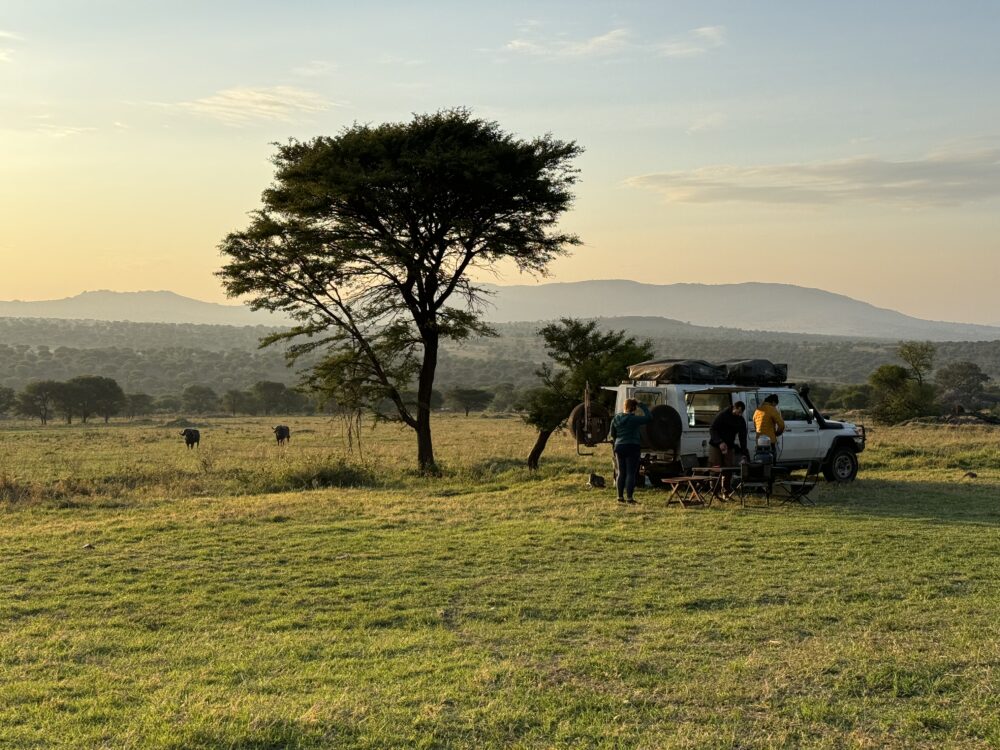
Traveling to the Serengeti necessitates passage through the Ngorongoro Conservation Area (NCA) when departing from and returning to Arusha. The charge for the NCA is $70.80 per individual every 24 hours, in addition to the car price. All those entering the Conservation Area are required to pay, regardless of whether they are only passing through to and from Serengeti National Park. Note that you will incur the NCA fee twice: first en route to the Serengeti and again upon your return to Arusha. The one method to circumvent the NCA fee being charged twice is to escape the Serengeti by Klein’s Gate in the park’s northeast, en route to Lake Natron. Consider that the journey from Klein’s Gate to Lake Natron is lengthy and arduous, requiring a substantial 7 to 8 hours of travel through a secluded region.
How do I arrange the park permits for my self-drive?
Entrance permits for all TANAPA-managed parks are payable at the gate via credit card (Visa or Mastercard). Advance reservations are unnecessary. Cash and debit cards are not accepted.
To enter the Ngorongoro Conservation Area, you must first acquire an entrance quote prior to proceeding to the gate for payment of park entry fees. The NCA office is located in Arusha and Karatu and operates from Monday to Friday. Personal attendance is required; online acquisition is not feasible. Roadtrip Tanzania can facilitate the Ngorongoro quotation on your behalf.
Timing your vacation to the Serengeti with the wildlife migration
The Serengeti is renowned for its yearly wildlife migration, characterized by millions of wildebeest and other herbivores relocating in search of fresh grass and water, accompanied by predators like lions trailing behind. Determining the value of scheduling your safari dates to coincide with the migration is a subjective decision. Based on our experience, the Serengeti provides exceptional animal observation throughout the year. Despite your best intentions, it is impossible to guarantee that your few days in the Serengeti will coincide with the river crossing. Furthermore, anticipate incurring extravagant costs for the Mobile Camps situated near the river crossing, as well as encountering numerous other safari cars. The spectacle of the wildebeest migration traversing the Grumeti and Mara Rivers is indeed remarkable and constitutes the pinnacle of any safari experience.
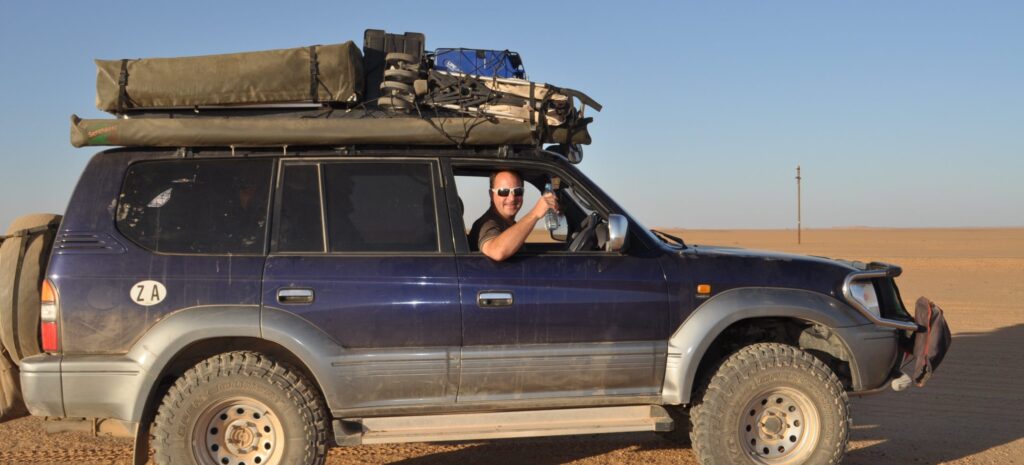
Timing your visit to the Serengeti with wildlife migration
Expert Africa serves as an invaluable resource for inquiries regarding wildebeest migration locations, providing graphic representations of the migration through maps, accessible here.
We have delineated the migration cycle below, which, governed by local precipitation patterns, has a somewhat predictable trajectory:
December to May: the Southeastern Region
The game migrations are most regular from December to April, when wildebeest and zebras gather in the Ndutu area to give birth. Following the brief rains of early November, the herds congregate on the short-grass plains, consuming the young, nutrient-rich grasses. They remain here between January, February, and March, with the majority of wildebeest calves being born within a brief period (about February), coinciding with peak predator densities.
May to July: Western Corridor
Wildlife observation is consistently favorable year-round, with a notable increase from late May to July, coinciding with the migration period. Millions of wildebeest move north in a braying procession of up to 40 kilometers in length. The primary challenge encountered by the wildebeest during this migration is the traversal of the crocodile-infested waters of the Grumeti River in the Western corridor. The crossing usually transpires from June to early July, with the initial herd crossing facing heightened hazards. Consequently, it may require several weeks from the arrival of the initial wildebeest at the southern banks of the river for the crossing to commence. Numerous wildebeest assemble near the riverbank. Observing the tumultuous herds of wildebeest during their migration across the Grumeti and subsequently the Mara River may be remarkably stunning, typically characterized by scenes of intense terror and disarray.
July to September: Mara River.
Wildlife observation is exceptional year-round, but reaches a peak of fascination between August and September with the migration of the herd across the Mara River, near the Kenyan border.
September to October: Lobo region.
In October, the wildebeest herds migrate southward once more, returning to the Serengeti, specifically towards the Lobo region and beyond. In December, the cycle recommences.
Camping and affordable places to stay in the Serengeti
Embarking on a safari in the Serengeti incurs significant costs. The most economical choice is camping at the public campsites. A cluster of seven campsites is located at Seronera Wildlife Lodge, along with two public campsites in the northern Lobo region. This is an advantageous location for lodging during migration. The journey from Seronera to Lobo takes around two hours by car.
The camping fees for TANAPA are $35 per person per night. Payment for public campsites is made at the entrance, exclusively via credit card. Advance reservations for public campsites are unnecessary.
The Seronera campsites are somewhat devoid of character and are mainly designed to accommodate inexpensive group safari tours. A spacious enclosed cooking space, designated for the bush chefs of the tour operators, is accompanied by a distinct covered dining area. As an independent traveler, you may also utilize these facilities. You will probably share the campsite with a minimum of 40 other campers associated with a cheap safari operator. Fortunately, we did not encounter this in the other safari parks in Tanzania.
Should you reside at a lodge or mobile camp, anticipate the following charges:
Budget: $300 – $400 – Double / Bed and Breakfast
Mid Range: $400-$600 – Double / Bed & Breakfast
Luxury: $600-$800 – Double / Bed & Breakfast
Our Destination expert accompanying your Arusha Car Rental is an excellent resource, detailing various lodges and campsites. Excursions to the Serengeti Tanzania has positive experiences with WAYO Green Camps (luxury) and Serengeti View Camp (more economical), although we lack comprehensive knowledge of all the camps in Serengeti, as numerous new establishments continue to emerge.
Can you help me to book my special campsite in Serengeti
Indeed, we are capable; nonetheless,
The designated special campsites in the Serengeti are predominantly allocated to private safari operators, which compete for them by bidding for the season. As a solo traveler, you will not be permitted to stay there. The less appealing special campsites remain unreserved by safari companies and are accessible for independent travelers to book.
Securing a campsite is challenging, and these permits are costly; yet, you will experience authentic nature by camping in a remote area. Provide your own food provisions. No facilities are available, including drop toilets or showers.
If you wish to stay at a private campsite rather than a public one, we recommend spending a day in Arusha prior to your safari. Visit the TANAPA and NCA headquarters in Arusha (open Monday to Friday) to explore available options and secure a reservation. Organizing your unique campground permit online is not feasible.
